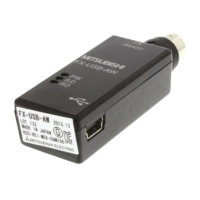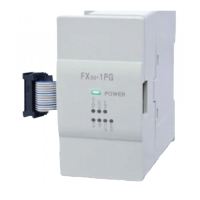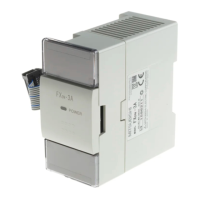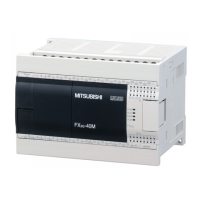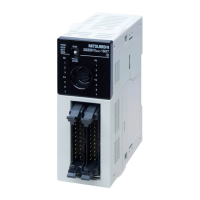7 Applied Instructions
7.16 External Device
583
FXCPU Structured Programming Manual
(Basic & Applied Instruction)
1
Outline
2
Instruction List
3
Configuration of
Instruction
4
How to Read
Explanation of
Instructions
5
Basic Instruction
6
Step Ladder
Instructions
7
Applied
Instructions
8
Interrupt Function
and Pulse Catch
Function
A
Relationships
between devices
and addresses
Function and operation explanation
1. 16-bit operation (GRY, GRYP)
1) The device specified by can store a value from 0 to 32,767.
2. 32-bit operation (DGRY, DGRYP)
1) A binary value can be converted into a gray code of up to 32 bits.
2) The device specified by can store a value from 0 to 2,147,483,647.
Cautions
1) When handling array data or 32-bit data in a structured program, a 16-bit device cannot be specified
directly as in the case of a simple project.
Use a label to handle array data or 32-bit data.
A 32-bit counter can be specified directly as it is a 32-bit long device.
Use a global label to specify a device.
2) The data conversion speed depends on the scan time of the PLC.
3) Some restrictions to applicable devices
S1: Applicable to the FX
3U, FX3UC and FX3G PLCs only.
S2: Applicable to the FX
3U and FX3UC PLCs only.
Word device storing
data after conversion
[Structured ladder] [ST]
GRY(EN,s,d);
When the data specified by is K1234 and
the device specified by is K3Y10
s
d
This instruction converts and transfers data from the
source (binary) to the destination (gray code).
GRY
EN ENO
d
s
Conversion source data
or word device storing
conversion source data
Command
input
BIN 1234
0100101100100000
b0
b15
110111010110
Y23 Y20 Y17 Y10
GRY 1234
Label 2
*2
[Structured ladder] [ST]
DGRY(EN,s,d);
DGRY
EN ENO
d
s
Label 1
*1
Command
input
*1.
Label 1 is defined as the conversion source data or
the device that stores the conversion source data.
Label 2 is defined as the device that stores the data
after conversion.
*2.
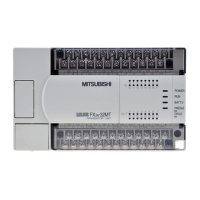
